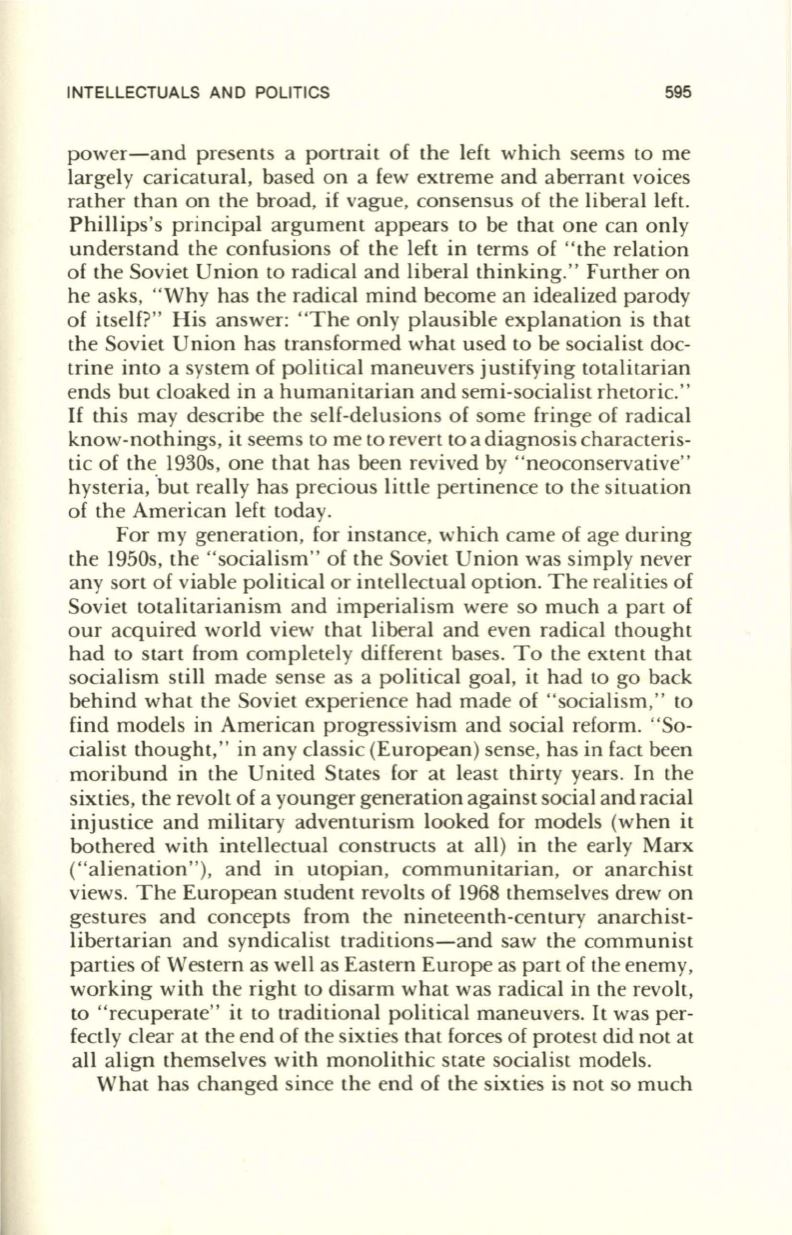
INTELLECTUALS AND POLITICS
595
power-and presents a portrait of the left which seems to me
largely caricatural, based on a few extreme and aberrant voices
rather than on the broad, if vague, consensus of the liberal left.
Phillips's principal argument appears to be that one can only
understand the confusions of the left in terms of "the relation
of the Soviet Union to radical and liberal thinking." Further on
he asks, "Why has the radical mind become an idealized parody
of itself?" His answer: "The only plausible explanation is that
the Soviet Union has transformed what used to be socialist doc–
trine into a system of political maneuvers justifying totalitarian
ends but cloaked in a humanitarian and semi-socialist rhetoric."
If
this may describe the self-delusions of some fringe of radical
know-nothings, it seems
to
me to revert
to
a diagnosis characteris–
tic of the 1930s, one that has been revived by "neoconservative"
hysteria, 'but really has precious little pertinence to the situation
of the American left today.
For my generation, for instance, which came of age during
the 1950s, the "socialism" of the Soviet Union was simply never
any sort of viable political or intellectual option. The realities of
Soviet totalitarianism and imperialism were so much a part of
our acquired world view that liberal and even radical thought
had
to
start from completely different bases. To the extent that
socialism still made sense as a political goal, it had to go back
behind what the Soviet experience had made of "socialism," to
find models in American progressivism and social reform. "So–
cialist thought," in any classic (European) sense, has in fact been
moribund in the United States for at least thirty years. In the
sixties, the revolt of a younger generation against social and racial
injustice and military adventurism looked for models (when it
bothered with intellectual constructs at all) in the early Marx
("alienation"), and in utopian, communitarian, or anarchist
views. The European student revolts of 1968 themselves drew on
gestures and concepts from the nineteenth-century anarchist–
libertarian and syndicalist traditions-and saw the communist
parties of Western as well as Eastern Europe as part of the enemy,
working with the right to disarm what was radical in the revolt,
to "recuperate" it to traditional political maneuvers.
It
was per–
fectly clear at the end of the sixties that forces of protest did not at
all align themselves with monolithic state socialist models.
What has changed since the end of the sixties is not so much


